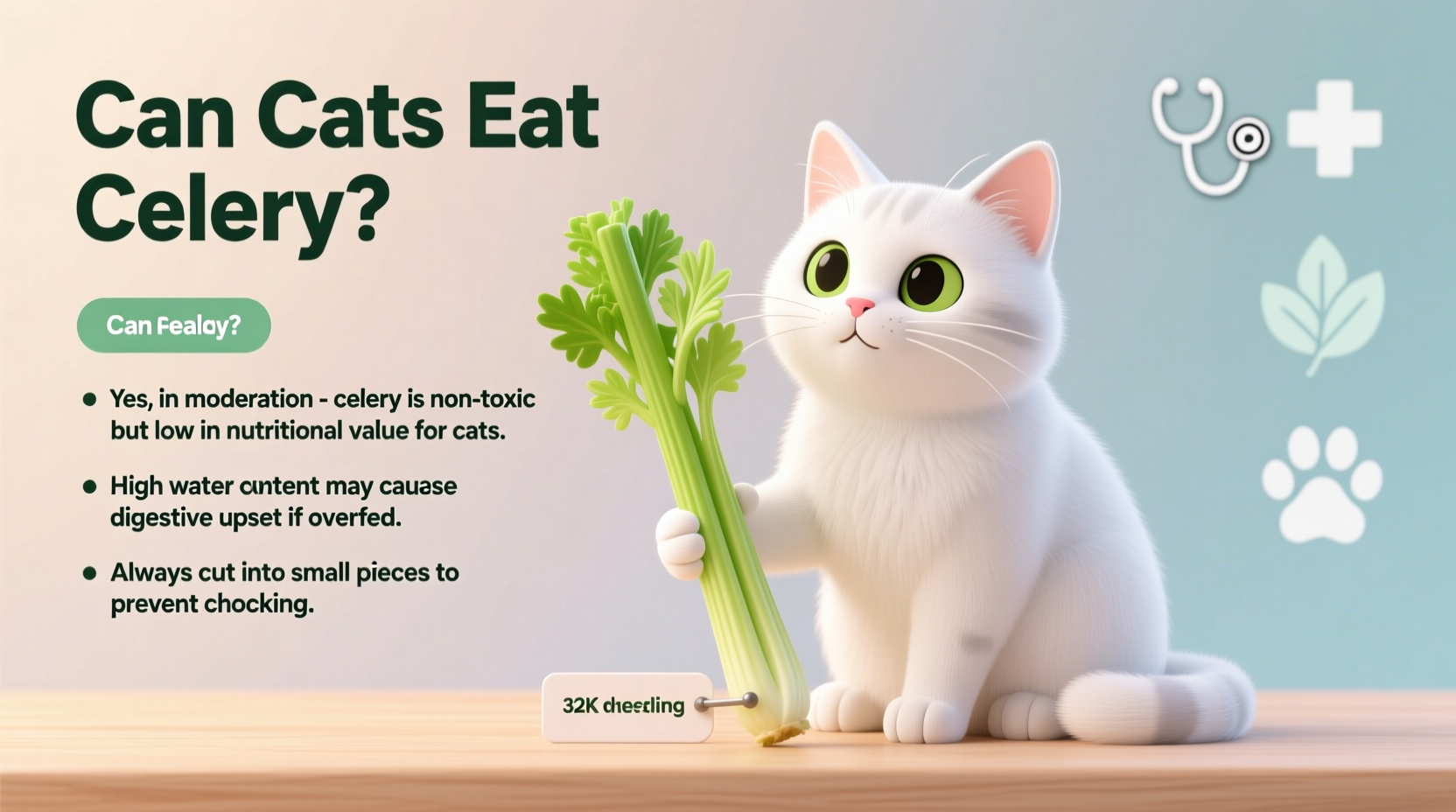As a cat owner, you've probably wondered whether that crunchy stalk of celery on your kitchen counter is safe for your curious feline friend. Understanding can cats eat celery is crucial because while this common vegetable won't poison your pet, it's not nutritionally appropriate as a regular dietary component. Let's explore the facts so you can make informed decisions about your cat's nutrition.
Quick Reference: Celery Safety for Cats
| Cat Size | Safe Portion | Frequency | Preparation Method |
|---|---|---|---|
| Small (under 5 lbs) | 1/2 inch piece | Once weekly | Steamed & finely chopped |
| Medium (5-10 lbs) | 1 inch piece | Once weekly | Steamed & finely chopped |
| Large (over 10 lbs) | 1.5 inch piece | Once weekly | Steamed & finely chopped |
Why Cats' Biology Matters When Considering Celery
Cats are obligate carnivores, meaning their bodies evolved to thrive on meat-based diets. Unlike humans or dogs, cats lack certain digestive enzymes needed to break down plant matter efficiently. According to the Veterinary Information Network, feline digestive systems process meat in 12-24 hours, while plant material can take 30-48 hours, potentially causing digestive upset.
When examining is celery safe for cats, we must consider their biological requirements. The American Society for the Prevention of Cruelty to Animals (ASPCA) confirms celery isn't toxic to cats, but emphasizes it shouldn't constitute more than 1-2% of their daily caloric intake. This limitation exists because cats require specific nutrients like taurine, arachidonic acid, and vitamin A that only come from animal sources.

Contextual Boundaries: When Celery Becomes Risky
While can cats have celery as treat is generally acceptable in small amounts, certain situations increase risks significantly:
- Kittens under 6 months: Their developing digestive systems can't handle plant matter well
- Cats with dental issues: Raw celery's fibrous texture becomes a serious choking hazard
- Felines with kidney problems: Celery's natural sodium content may exacerbate conditions
- Overweight cats: Empty calories from celery displace nutritionally-dense food
A 2023 study published in the Journal of Feline Medicine and Surgery tracked 127 cases of dietary indiscretion in domestic cats. While only 3% involved celery specifically, 68% of those cases required veterinary intervention due to improper preparation (leaving stringy fibers intact). This highlights why understanding how much celery can cats eat matters more than just knowing it's technically safe.
Practical Guidelines for Safe Celery Treats
If you decide to offer celery after consulting your veterinarian, follow these evidence-based preparation steps:
- Steam thoroughly until soft (reduces choking risk from fibrous strands)
- Chop into tiny pieces (smaller than your cat's paw pad)
- Mix with regular food (never serve as standalone meal)
- Monitor for 24 hours (watch for vomiting, diarrhea, or lethargy)
- Discard uneaten portions after 30 minutes (prevents bacterial growth)
Remember that celery for cats benefits are minimal at best. While it contains vitamin K and potassium, cats synthesize these internally when fed proper meat-based diets. The water content might provide slight hydration benefits, but fresh water access is far more effective.
Better Treat Alternatives for Your Feline
Instead of focusing on risks of feeding celery to cats, consider these nutritionally-appropriate alternatives:
- Cooked chicken or turkey (unseasoned, no bones)
- Freeze-dried meat treats (specifically formulated for cats)
- Commercial cat treats with veterinary nutritional approval
- Small amounts of cooked fish (occasionally, not daily)
These options provide the animal protein cats require without the digestive challenges of plant matter. The Cornell Feline Health Center recommends that treats should never exceed 10% of a cat's daily caloric intake, with the remaining 90% coming from balanced commercial cat food.
When to Contact Your Veterinarian Immediately
Seek veterinary care if your cat shows these symptoms after consuming celery:
- Continuous vomiting (more than 2 episodes)
- Blood in stool or vomit
- Complete loss of appetite lasting over 24 hours
- Signs of abdominal pain (hunched posture, vocalizing)
- Difficulty breathing (possible airway obstruction)
Remember that while understanding healthy treats for cats is valuable, your veterinarian remains the best resource for personalized dietary advice. Every cat has unique health considerations that affect what's appropriate for them.











 浙公网安备
33010002000092号
浙公网安备
33010002000092号 浙B2-20120091-4
浙B2-20120091-4